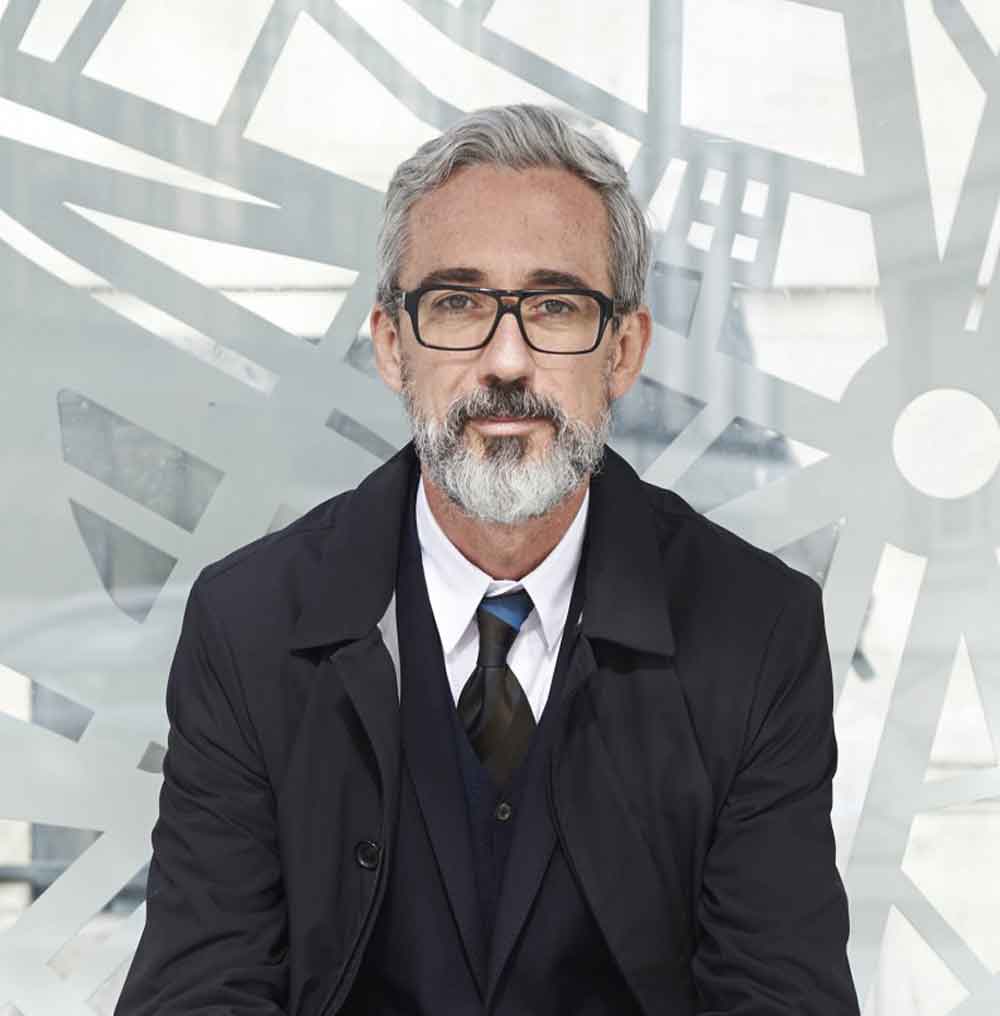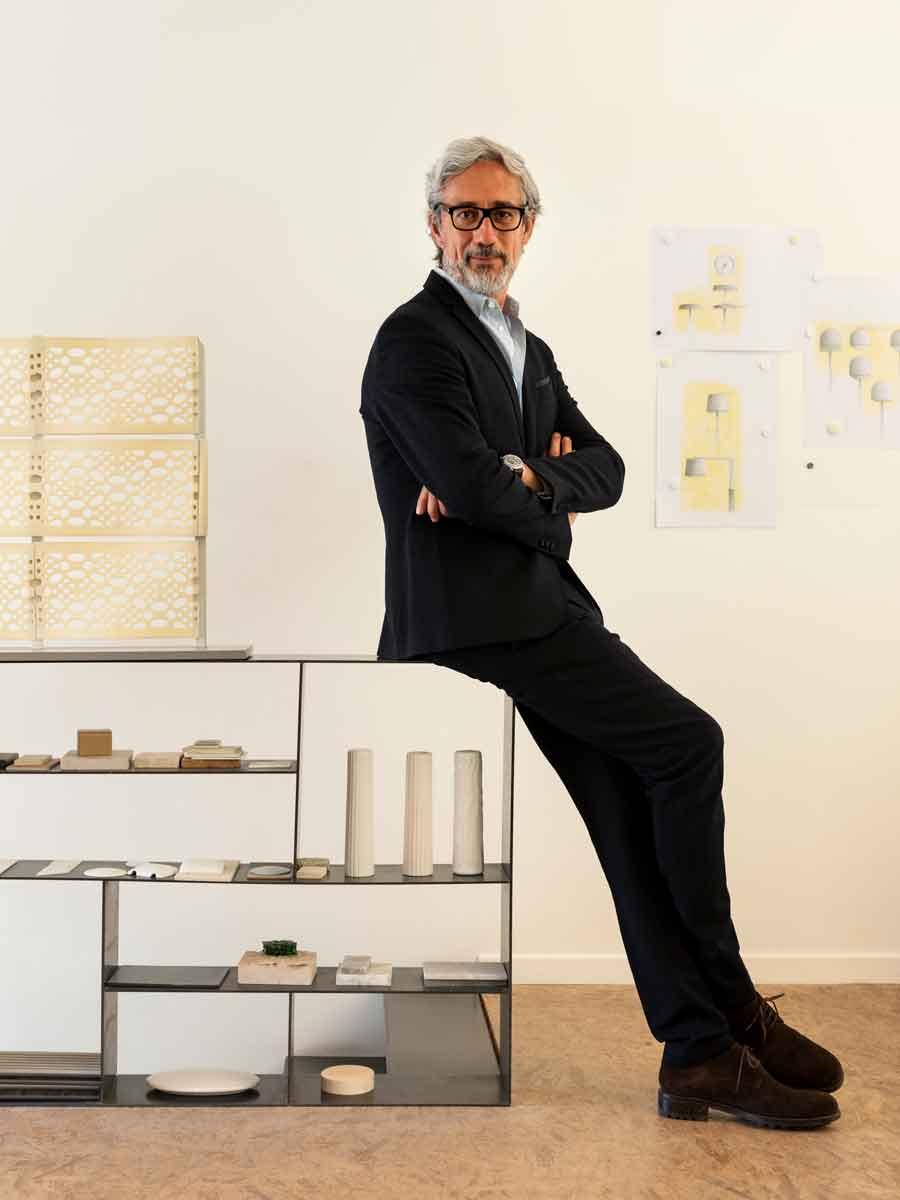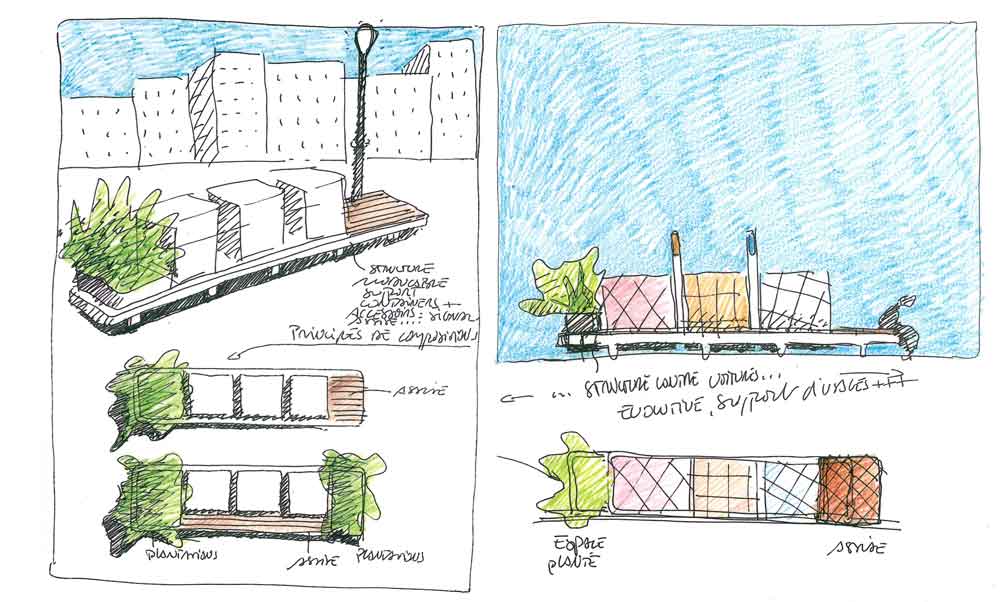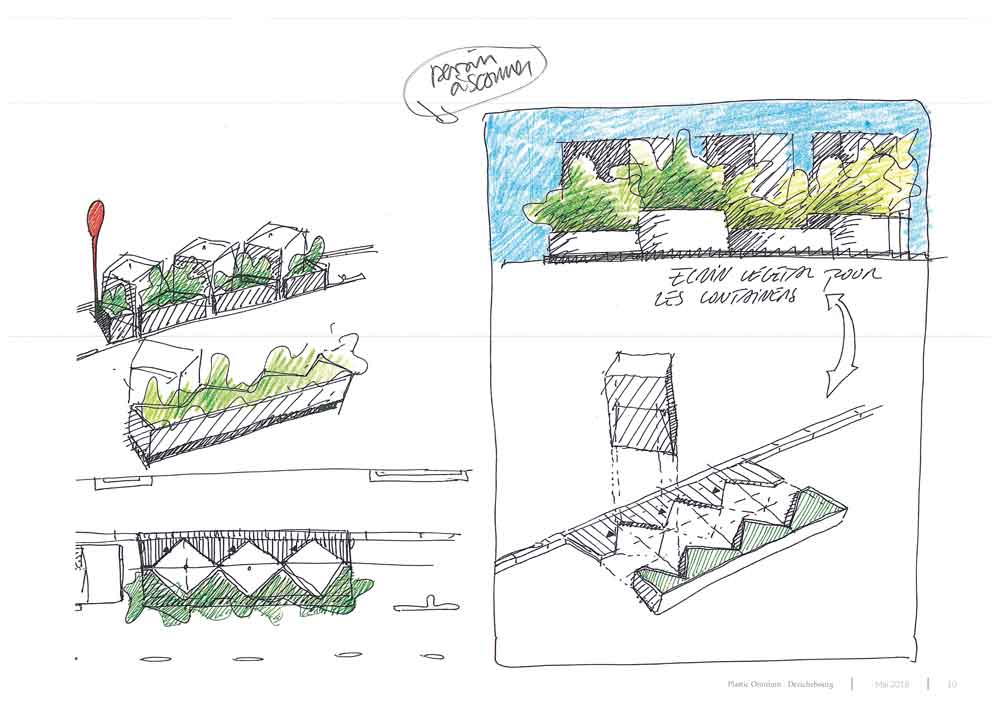An interview with the French designer Marc Aurel

About Marc Aurel
Marc Aurel masters an integrated vision of public space, from the detail of the object to the complete design of spaces. He favors the well-being of the user while respecting functional constraints. His sensitivity developed at the school of fine arts and architecture is combined with his expertise in design, urban space and project management. The innovation of materials, forms and uses feeds his reflection and his collaborations, serving the new expectations of the user. More information about Marc Aurel and his agency design urbain:
About the city we would like to live in
Monsieur Aurel, as far as the development of the city is concerned – where are we today, if we look from the European medieval city to the city of 19th century flâneurs to the modernism of the 20th century?
Today we are in the post-Covid city. The health crisis is a tremendous accelerant for urban transformation. This is because the constraints associated with the pandemic are leading to a new organization of public space that is currently provisional, but in some cases could be sustainable and transform our cities in the long term.
What are the trends?
The new trends are expressed mainly through new uses of public space: such as playing sports, socializing and working, having lunch, relaxing, better waste disposal, etc. We are in a new era of quality, comfort and friendliness in the city. We need less noise, smell and visual aggressiveness to achieve a better quality of life….
“A well-organized city
leads its inhabitants
to own it and love it.“
What are the challenges we have to face?
The challenge of the city of tomorrow is the reappropriation of public space by its inhabitants. Cities must also have the capacity to evolve and constantly renew themselves to keep up with changing needs in terms of transportation, comfort, cleanliness, information, etc. to keep pace. To constantly renew themselves, in ever shorter periods of time, while preserving their identity, will be the great challenge for European cities that are choking on their own history. It is a question of continuing to valorize the heritage without turning into museums, of making the structures more fluid and modern to allow a healthy functioning of society.
What are the basic needs of the population?
A trend that addresses the needs could be that places of meeting are no longer mostly paid, as is the case today with shopping malls, cafes and bars, that is, all the places where our children meet on weekends. Public space must also be a free and accessible place for all. SUPERKILEN park in Nørrebro is a good example of this. It was developed by the architects of the BIG agency in a multi-ethnic district in Copenhagen, with the involvement of the residents. A place was created where versatile activities like swinging, boxing, playing chess and many more are possible.
What are the criteria for a human city?
A well-organized city leads its inhabitants to own it and love it. Social life is improved as a result. So the cities of tomorrow should be about creating public spaces of high quality, accessible to all and not for sale. Because we have recognized that we need spaces where we can live, meet and exchange freely. That is what makes the city. We must not leave this prerogative to the shopping malls, as in the United States. The city needs beautiful, high-quality public spaces that are accessible to everyone.
What elements are important for quality of stay?
Unique public spaces beyond the fashions that are currently prevalent, franchised public spaces should be avoided, will to preserve the uniqueness of the city, as Barcelona exemplified in the 90s.
What would be our biggest mistakes?
Not being bold, innovative and creative.
What would be our greatest achievements?
Being innovative, creative, accessible to all.
What does a city look like that you would like to live in?
Living well in a city is largely determined by the quality of public transportation, but also by the cleanliness, facilities and quality of information available to citizens. We dream of a limited use of the car, of the possibility to easily use alternative means of transport, from bicycles to streetcars, from public buses to subways. We would certainly like to see a quieter and less polluted city.
What examples do we see of a city we like to live in? What are your 3 favorite cities and neighborhoods in the world today?
Above all, it is the presence of landscape in the city that creates a vital balance as a counterpoint to urban density. Stockholm, Copenhagen and Berlin are cities that have preserved a harmony between urban density and nature. Berlin has many parks, lakes and rivers where residents can recharge their batteries. Stockholm, built on several islands in the Baltic Sea, also offers this possibility. Copenhagen, in its urban development, has managed to preserve the quality of natural spaces on its territory.
What are your 3 favorite cities in the historical world where you can imagine having lived? And why?
– New York, because we all know this city, even if we have never been there
– Singapore because of the relationship between the city and nature
– Hong Kong because of its history, urban density and contrasting relationship with its surroundings.
Are you optimistic about the city, or should we move to the countryside?
The current pandemic makes it clear to us that the question of the optimal size of a city, where physical distance can best be managed without being burdensome for residents, is not answered by megacities with 7 or 12 million inhabitants. This is also the challenge for the cities of tomorrow, in their size and in their relationship with nature.
Which city have you never been to, but would like to visit?
To Tokyo in Japan.

About the development of the urban sorting bank TRILIB in Paris
What is the intention of Trilib? What is its purpose?
The purpose of Trilib is to improve sorting itself, to make people aware of the importance of sorting waste, so that at the end of the day, significantly more waste is sorted. In this respect, Trilib is an urban sorting lighthouse that tells about recycling, but also about responsible business and our responsibility for ecological issues. TRILIB makes us aware of all these challenges.
What were the key requirements and must-haves for the design?
Design quality, efficient maintenance management, urban integration of the station into the Parisian environment and, of course, production costs.
How will Trilib meet the needs of the city of the future? How innovative is Trilib?
The Trilib project, carried out for the city of Paris, is a perfect example of the changing needs and practices related to waste separation in public spaces. We transformed zones that were originally perceived as exclusively dedicated to waste into “frequentable” places, civic spaces where everyone takes responsibility towards the environment, places that are identifiable to citizens and that they can use and participate in.
What was the design process like?
We adopted an agile and holistic strategy that was open to all project stakeholders and very empathetic.
What were the different stages of development?
Sketches were created first, followed by pre-project, mock-up, sample production, development tracking, manufacturing and installation tracking.
What were the particular challenges during the design process?
In exchanges with SULO and BET in particular, understanding innovative impulses, the qualities desired by the city of Paris, and the designer’s input were at the heart of the decisions.

How is Trilib related to Marc Aurel’s other design objects?
All my creations are part of the same logic and reflection that has been used for almost 30 years to question the same context: the city and public space. We do this by approaching the historical context including the cultural inscription of the objects in their relationship to the city and life practices.
What is very important to you?
To design beautiful objects at the service of all, objects of expressive, even poetic value. Because my role is to invent scenarios so that the project can take place in the field of imagination, new fictions that mix with the depth of reality.
What are the core values of your work?
Innovation, rigor, freedom.
Why were you particularly qualified for this task?
In our 30 years of practice, we have intensively studied the city, its developments and the relationship of its inhabitants to their urban environment. We have thought deeply about furniture, lighting, public spaces, but also urban mobility, and with numerous references we bring a lot of knowledge about the city of Paris to the project. Our understanding of design encompasses and combines very different scales, namely that of the city and the object.
Do you like the result?
I am very satisfied, especially with the day-to-day management of the stations.
Do you think there is a real improvement for people with Trilib?
Yes, an ergonomic improvement in the whole process of throwing in and sorting, a better recognizability of the stations in the public space by creating a special place that is always maintained, and a significant upgrade of the sorting itself.
What does it take for a person to be an exceptional designer?
Culture, conviction and imagination to see the world around him differently.
Can design make a difference?
The designer’s contribution is to make street furniture an expression of the politeness of the city.

Can design improve life?
The challenge in our cities today is to optimize the comfort of the inhabitants, to offer new services. To do this, we must design systems of objects and furniture that meet these new expectations, but also develop their emotional value and friendliness through sophisticated work with materials and forms. The role of the designer is to participate in this better life in the city.
What are your three wishes for the future (personal and global)?
To have more time to travel and visit the new milestones of design, architecture and urbanism. To be involved in the development of strategies and companies in advance. To be able to do innovative projects in public spaces with companies that are willing to leave their comfort zone.
What surprised you positively last time?
The active participation of all the people who worked on the Trilib project: Politicians, technicians, sales people, etc. A joint effort that led to success.

